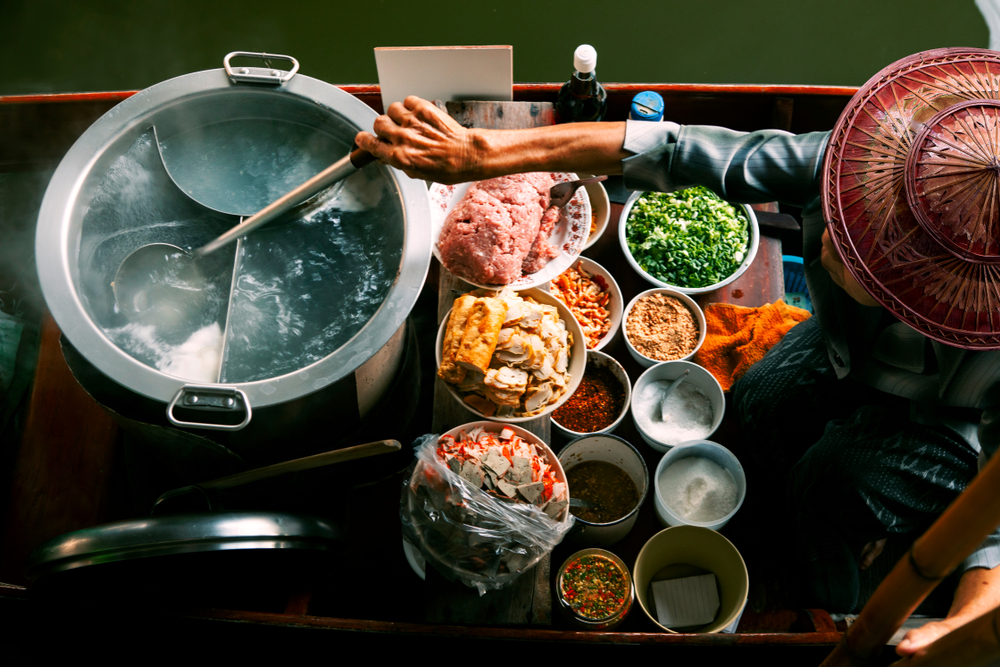President Trump’s latest round of tariffs is hitting consumers where it hurts most: everyday essentials. From food and fashion to home goods and tech, imported items are about to cost a lot more—and for many households, that means rethinking what “affordable” even looks like. While the intention is to protect American industries, the immediate result is sticker shock across multiple categories.
So before your grocery bill jumps or your favorite products become luxury items, here are 13 ca n’t-live-without things that are about to get seriously more expensive—and why.
1. Coffee
Coffee lovers, brace yourselves. The U.S. imports a significant portion of its coffee beans from countries now facing new tariffs, including Brazil and Colombia. According to Reuters, these tariffs could lead to noticeable price increases on your daily brew. With supply chains already strained, your morning cup might soon cost a lot more.
The impact won’t just be felt at your local café. Grocery store prices for coffee are expected to rise as well, affecting both premium and budget brands. Small businesses that rely on coffee sales may struggle to absorb these costs, potentially leading to higher prices for consumers. It’s a bitter pill to swallow for coffee enthusiasts nationwide.
2. Seafood
Seafood, once a staple in many diets, is becoming a luxury item. Imports from countries like Vietnam and Chile are now subject to increased tariffs, driving up prices across the board. Items such as shrimp, salmon, and tuna are among those most affected. Consumers can expect to see these increases reflected in both grocery stores and restaurants. According to Vietnam Economic News, new-generation FTAs have helped Vietnam expand its seafood exports despite challenges like tariffs, but higher costs remain a concern for global markets.
The ripple effects extend beyond just higher prices. Restaurants may be forced to adjust their menus, reducing seafood offerings or substituting them with less desirable options. Fishermen and distributors face uncertainty as demand fluctuates in response to cost changes. For seafood lovers, enjoying your favorite dishes may soon require a deeper dive into your wallet.
3. Wine
Wine aficionados are also feeling the squeeze. Tariffs on imports from traditional wine-producing countries like France and Italy are set to increase, leading to higher retail prices. According to Marketplace, these changes could significantly impact the cost of both everyday and premium wines. Consumers may need to adjust their preferences or budgets accordingly.
The domestic wine industry might see a temporary boost as consumers look for more affordable alternatives. However, the overall market could suffer as price-sensitive buyers reduce their consumption. Wine retailers and importers face the challenge of balancing inventory and pricing strategies in this new landscape. For many, the joy of a glass of imported wine may come with a heftier price tag.
4. Fresh Fruits
Fresh fruits imported from Latin America—like avocados, bananas, and berries—are expected to see a jump in price. These items, once affordable staples, are already showing signs of inflation in grocery stores. With tariffs making imports more expensive, your fruit bowl could soon become a luxury spread. The effects will hit consumers hardest during off-season months when local produce isn’t available.
This also impacts school lunch programs, restaurants, and small grocers who rely on these fruits to meet demand. For families on a budget, fewer fresh options may mean turning to processed snacks instead. Nutritionists are concerned this could undermine efforts to encourage healthy eating. According to Produce Market Guide, the new tariffs on fresh produce from Central and South America are expected to increase costs by at least 10%, leading to noticeable price hikes for consumers.
5. Automobiles
New tariffs on vehicles and vehicle parts—particularly from Germany, Japan, and South Korea—mean car prices are heading north. Whether you’re shopping for a Toyota, BMW, or even a domestic brand assembled with foreign components, expect higher sticker prices. Dealerships have warned that even existing inventory may go up due to anticipated replacement costs. Your dream car just got more expensive.
Even used cars could feel the ripple effect as demand shifts away from new models. Car repairs will also become pricier since many parts are imported. Industry experts say buyers on the fence should act fast before pricing recalibrates. In short, if you were planning to upgrade, now might be your last chance at pre-tariff prices.
6. Furniture
From minimalist sofas to flat-pack bookshelves, much of the furniture sold in the U.S. is imported. With tariffs applied to imports from countries like Vietnam and China, that sleek mid-century chair is about to cost you. Retailers are either passing on the added cost to consumers or quietly shrinking their catalogs to avoid sticker shock. Either way, the impact is real.
Online shoppers especially will feel the pinch as shipping surcharges rise alongside product costs. Domestic furniture makers might benefit in the long term, but right now, the market is in limbo. Delivery delays are already compounding the problem. So yes—expect to pay more for less.
7. Clothing and Apparel
Fast fashion is taking a financial hit. With textiles and garments being major imports from Asia, clothing companies are reevaluating pricing and production models. Even budget-friendly brands like H&M and Target are signaling upcoming price increases. Tariffs on fabrics and finished products could hike costs at every level.
For shoppers, that means higher prices on basics and possibly less variety. Some brands may cut corners in quality to maintain price points, leading to faster wear and tear. This could push more consumers toward secondhand or slow fashion—if they can afford it. Either way, your wardrobe refresh won’t be as cheap as it used to be.
8. Electronics
Phones, laptops, tablets, TVs—nearly all our electronics rely on parts manufactured abroad. The tariffs will affect not just finished products, but the components inside them, like semiconductors, batteries, and screens. Major manufacturers may absorb some of the costs in the short term, but eventually, those increases land on the consumer.
Expect to pay more for new tech releases and see fewer deals on older models. Even accessories like headphones and chargers could be hit. This is especially frustrating for parents during back-to-school season and professionals needing reliable gear. Bottom line: tech is about to get pricier and harder to upgrade impulsively.
9. Kitchen Appliances
Dreaming of a new fridge, air fryer, or dishwasher? Better act fast. Tariffs on steel and electronics are inflating the prices of kitchen staples faster than many households can keep up. And these aren’t just luxury items—these are everyday tools.
Retailers are quietly bumping prices as new stock arrives, while manufacturers are reworking supply chains. If you’re in the middle of a renovation, expect some hard budget decisions. Replacement parts for broken appliances will also see hikes. Even energy-efficient models may be out of reach for cost-conscious families.
10. Toilet Paper and Paper Goods
It may sound strange, but tariffs on raw pulp and manufacturing equipment are affecting prices on paper products. Toilet paper, paper towels, and tissues are inching up in price—again. Many brands source materials or rely on international processing, and those costs are climbing.
Households already stretched by inflation may feel the burn here, too. Bulk-buyers might be the most insulated—if they can afford the upfront cost. And forget sales: retailers aren’t cutting prices while paying more to restock. Even the bare necessities are becoming a luxury.
11. Baby Formula
With tight global supply chains, tariffs on baby formula and key ingredients are sounding alarm bells. The U.S. has already experienced a baby formula shortage in recent years, and tariffs threaten to deepen that crisis. Imported formula and specialty items could see steep price hikes, making things even harder for new parents.
Low-income families will be disproportionately affected, especially those relying on programs like WIC. Substituting brands isn’t always an option for babies with allergies or medical conditions. Experts warn this could increase food insecurity in the most vulnerable households. It’s a perfect storm brewing in the formula aisle.
12. Batteries
Lithium-ion batteries power everything from your phone to your electric toothbrush. They’re also heavily reliant on imports from China and South America—two regions deeply affected by tariff shifts. That means everything that runs on rechargeable batteries is about to cost more.
This could impact electric vehicle affordability, solar power storage, and even your emergency flashlight. Stockpiling spares might become a new kind of prepper behavior. Even small devices like e-bikes and scooters are on the list. In an increasingly battery-powered world, this isn’t a small problem.
13. Home Renovation Materials
Paint, nails, tiles, flooring—these aren’t glamorous purchases, but they’re about to get pricier. Tariffs on construction and finishing materials mean contractors are raising quotes across the board. Even DIYers will notice the difference at places like Home Depot or Lowe’s.
Renovation timelines may stretch as budgets tighten. Some homeowners are pausing mid-project due to rising material costs. If you’re planning to build or remodel, expect tough decisions. The dream kitchen just got a lot more expensive.
This article is for informational purposes only and should not be construed as financial advice. Consult a financial professional before making investment or other financial decisions. The author and publisher make no warranties of any kind.





















